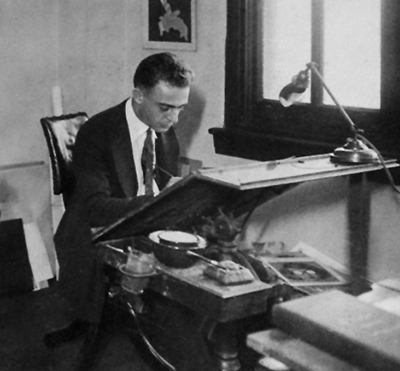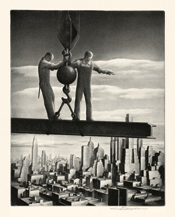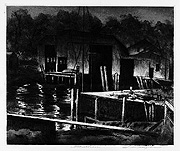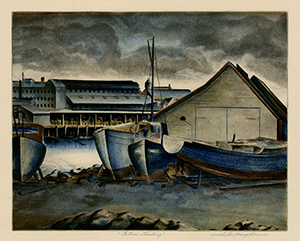
Etcher, painter, teacher, writer, and lecturer, Samuel Margolies, a native of Brooklyn, studied at the National Academy of Design, The Cooper Union Art School, and privately with Victor Semon Perard (1870-1957). He also studied and exhibited at the Beaux-Arts Institute, a New York academy that attracted many immigrants and first-generation Americans aspiring to work in the construction design trades.
During the Great Depression of the 1930s, Margolies turned seriously to the intaglio mediums, becoming a master of etching and aquatint techniques. His representational graphic work ranged from serene rural images of the New England countryside to his now renowned compositions of Manhattan's dramatic skyscraper canyons and high-rise construction workers. Margolies exhibited in numerous venues, mostly in New York, including the Society of Independent Artists, the Society of American Etchers, and the Whitney Museum of American Art. His prints reached a broad public through regular Associated American Artists’ publications.
In 1935 Margolies joined the Federal Art Project of the Works Progress Administration (WPA), where he served as an instructor in its Art Teaching Division. A member of the American Artists Congress, his etchings were displayed in the New York World's Fair in 1939. That same year he left the WPA to work as a circuit designer for the Bundy Corporation, continuing to work as a printmaker into the early 1940s. He conducted classes in etching into the 1950 but had ceased producing his own prints.
The artist’s work is included in numerous collections including the Library of Congress, Metropolitan Museum of Art, Georgia Museum of Art, Lowe Art Museum, and Nelson-Atkins Museum.





